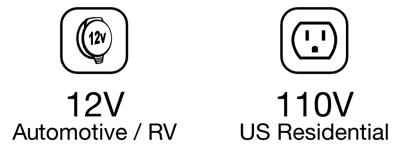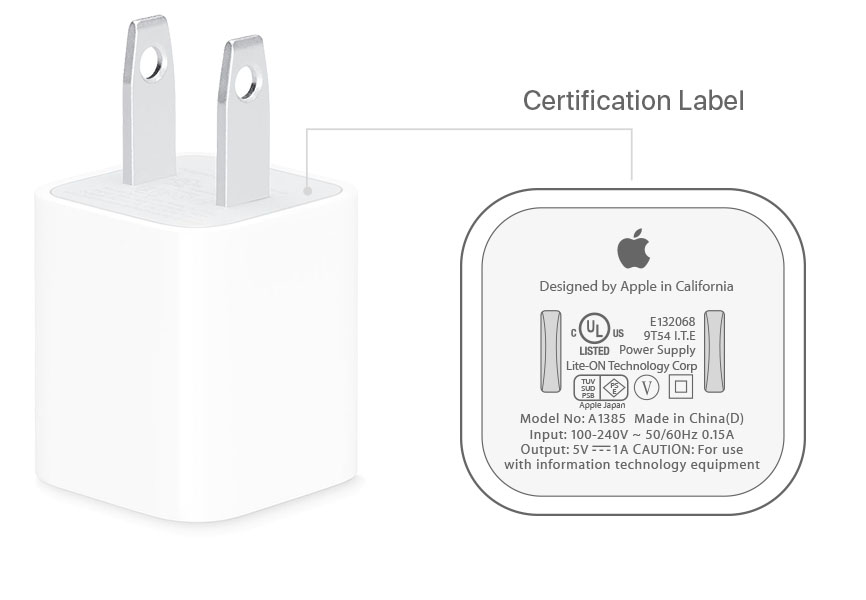Assuming you have no prior knowledge of electrical circuits, here’s a diagram of a what a simple electrical circuit looks like.

- First of all, you need a source of electricity – that’s the battery. A battery always has two terminals – positive (+) and negative (-). The polarity of the battery terminals is always well marked.
- Secondly, the device you want to power. In this case, let’s consider an LED light strip. All devices also have + and – terminals. They need to be connected to the corresponding terminals of the battery, to ensure that it is connected with the correct polarity.
- Apart from the battery and the device, an electrical circuit also has a switch, so that you can easily turn the device on and off.
- To protect your device from current surges, a fuse is needed. It is usually wired on the positive wire leading to the device. Switches and fuses are usually bidirectional, so the polarity of the connection does not matter.
- Finally, to connect the above components, you will need the right type of wires and connectors.
Each of the above components are covered in greater detail on our Wiring Basics and Electrical System Design page – but first, let’s go through some of the jargon you’ll need to know.
By the end of this page, you should be able to understand what terms are used to describe the ratings and capacities of common components such as batteries, chargers, and appliances.
Volts
There are two main types of electrical systems you need to be aware of: 12 volt and 110 volt.
In the US, residential electrical systems are 110V. Automotive electrical systems are 12V. Think of them as two different languages of electricity. Anything that you plug into your wall socket at home talks 110V, and anything that you plug into the cigarette lighter socket in your car talks 12V.

You’ll be building your electrical system as a 12V system, since most of the devices you’ll be working with are designed for automotive or RV applications, and are designed for a 12V power source.
Amps
Electric current is measured in amps. It basically indicates how much electrical current your device can draw from the battery. Devices that require higher current will drain your battery faster.
Here are the maximum amp ratings for some of the devices we installed in our van.

Keep in mind, that these are the maximum ratings for these devices. Under normal working conditions, they will draw slightly less current. The fan’s current draw is dependent on the speed you run it at – it is 0.5A at the lowest setting, and 4.4A at the highest. Our fridge is a real power sucker at 5A. Keep in mind that the current of a device is dependent on the voltage it is running at – these ratings are all for a 12V system.
So that was all about devices that are draining your battery. The same concept applies to devices that will charge your battery – battery chargers are also rated in Amps. A charger with a higher Amp rating will be able to charge your battery faster, but that comes at a cost – faster charging usually reduces battery life. Common battery chargers start at around 5 A, and go up to 60 A.
Amp-hours
If you multiply the current rating of a device (in Amps), with the time you will be using it (in hours), you can estimate how much it will discharge your battery. The unit for this is called Amp-hours (Ah).
Amp-hours = Amps x Hours
For example, if we ran the lights for 8 hours, it would draw only 4 Ah of electric charge from your 12V battery. On the other hand, running the fridge for just an hour would consume about 5Ah.
Using simple calculations like this, you can determine the battery capacity you will need for your van. Conveniently, batteries are rated in Ah. See the Electrical System Design page for how we decided on our 100Ah battery.
Watts
While Amps indicate electric current, Watts indicate electrical power.
Confused? Think of electricity as water powering a water wheel through a pump. The flowing water is like the electric current (measured in Amps). The pressure created by the pump is equivalent to the voltage. The ‘pump’ in this case, is the battery. Finally, the work done in turning the wheel is equivalent to the electrical power used by a device (measured in Watts).
Watts are useful, because they are a good way of comparing the actual power consumption of devices – irrespective of the voltage of the electrical system.
Watts = Amps x Volts
So, our lights which draw 0.5A on our 12V system, consume 6W of electrical power. A typical laptop charger is about 60W – so, on a 110V system, it will draw about 0.55A.
You can also get 12V laptop chargers, which can plug directly into a cigarette lighter socket. Since the power required to charge the laptop remains the same (60W), and the voltage is different (12V, compared to 110V), the current will also change. That 12V laptop charger will draw 5A of electric current.
Inverters
Your van electrical setup will be based on a 12 V automotive battery. So, if you want to power any household appliance that runs on a regular 110V wall socket (like a laptop charger or a blender), you will need a device called an inverter. Most household appliances are rated in Watts, and so are inverters.

On the low end, you can get a cheap 300 W inverter for about $30. On the high end, you can get 2000 W inverters for about $150. They’re also pretty large.
Laptop chargers are typically 60-80W, and small blenders are 200-300W. Unless you’re planning on running several high power devices at the same time (not typical in a weekender camper van), you should be fine with a mid-range 500W or 750W inverter.
5V Devices
Ok, we lied earlier. There actually might be a third type of electrical system you might have to deal with, apart from 12V and 110V. It’s the smaller cousin of the 12V system – the 5V system. Some devices you might be interested in, run on 5V. For example, the LED string lights we liked, required a 5V power supply.
You’ll need a different type of translator to connect a 5V device to your 12V system – it is called a step-down transformer. It reduces the voltage from 12V, down to 5V, and is very easy to use. Simply connect its input wires (+ and -) to your 12 V system, and its output wires (+ and -) to your 5V device. To see how we installed our 5V LED lights with this transformer, go to our Lights page.

AC and DC Systems
It is worth mentioning, that there is an important difference between the automotive 12V system, and the household 110V system.
In the 12V system (also the 5V system), electric current always flows in one direction – hence it is a DC system (direct current). The electric system in your home runs on AC (alternating current).
In an AC system, the electric current changes direction – about 50-60 times a second (50-60 Hz). It is beyond the scope of this article on why that is, and how it works. If you’re interested in learning more, check out the explanation on HowStuffWorks.
What’s worth knowing, though, is that all devices do require current to flow in one direction – i.e. all devices run on DC power. That’s what your phone charger is doing – it is converting the AC power of your home, to the DC power that your phone needs. If you look closely at any charger, you will see this information on the certification label.
The iPhone charger, for example, has a 5W power rating. Its input rating is 0.15A @ 100-240V, 50-60Hz. That means it can function on AC systems ranging from 100V to 240V. In the US, wall sockets have 110V AC, while countries such as India have 240V AC systems.
The iPhone charger’s output rating is 1A @ 5V, meaning it delivers 1A current at 5V, to charge the phone. In fact, all USB ports run at 5V.
